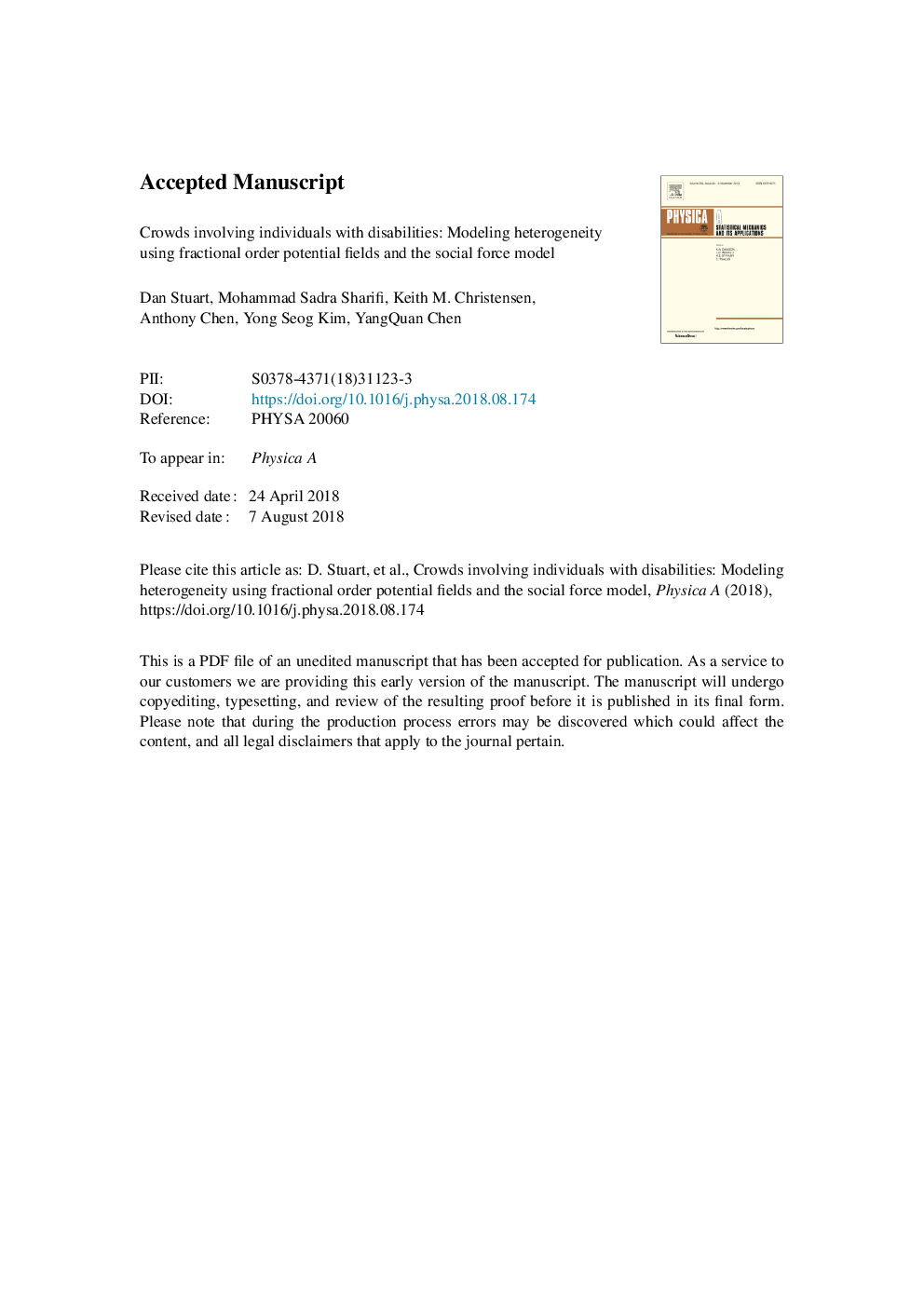| Article ID | Journal | Published Year | Pages | File Type |
|---|---|---|---|---|
| 11023292 | Physica A: Statistical Mechanics and its Applications | 2019 | 25 Pages |
Abstract
There is a need to model individuals with physical disabilities in a crowd. This requires both understanding how such individuals impact a crowd and how the crowd impacts them. Previous efforts have adjusted velocity to represent individuals with disabilities in a crowd. The various disabilities that are represented in a crowd of individuals show much more complex and varying interactions that require an improved form of modeling. Individuals with disabilities are in part composed of those using mechanical and electric wheelchairs, those who have impaired vision, and those with diverse mobility-related disabilities. In our research we conducted a large-scale crowd experiment with heterogeneous compositions of crowds involving individuals with disabilities. The initial outcomes demonstrated that each group differed in velocity as well as in the composition of their environment. Additional results showed that interaction within a crowd varied as well. The purpose of this paper is to provide some initial differences found in the study of individuals with disabilities within a crowd and how those differences change pedestrian interaction. Using the nature of Fractional Order Potential Fields (FOPF), this paper provides a method for how pedestrian interaction can be adjusted to respond to the differences created by those with various disabilities in each group. Finally, how a hybrid model between FOPF and the Social Force Model can be used to capture experimental results in simulation.
Related Topics
Physical Sciences and Engineering
Mathematics
Mathematical Physics
Authors
Daniel S. Stuart, Mohammad Sadra Sharifi, Keith M. Christensen, Anthony Chen, Yong Seog Kim, YangQuan Chen,
